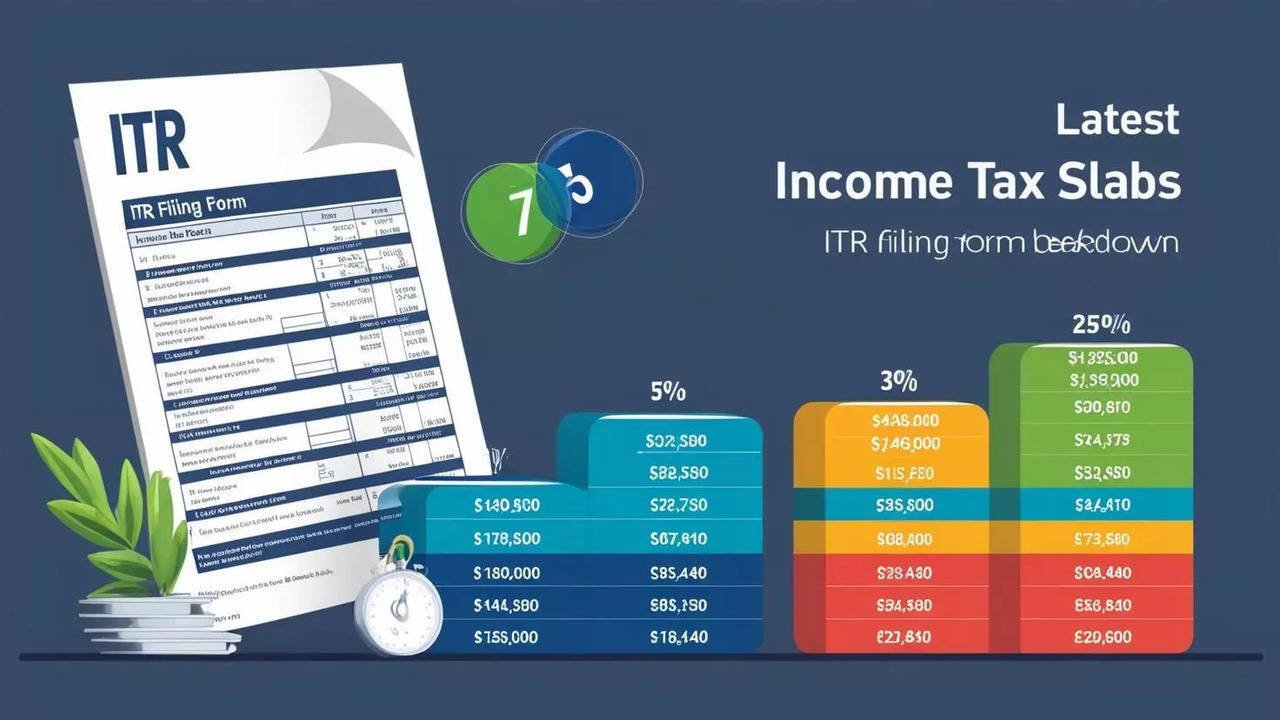Table of Contents

Tax return is essential to effectively managing your finances. This guide will take you from the basics to practical tips to ensure a smooth filing experience. This blog is related to financeinfotech.com.
What is a tax return?
A tax return is, at its core, an assortment of forms you submit to a tax authority such as the Internal Revenue Service in the United States. These forms provide information about your income, expenses and other tax-related data. Tax returns are used to calculate tax liabilities, schedule payments or request refunds for overpaid taxes.
Imagine it as a report card that you send to the government. You (or your employer), likely paid tax on your income throughout the year. The tax you owe is the difference between the tax you have already paid and the tax you have not yet paid.
You get a refund if you have paid more tax than you owe.
You have a liability if you have paid less than what you owe.
The process makes sure that everyone pays their fair share towards funding public services such as infrastructure, education and national defense.
Why is it so important to file a tax return?
Filing a tax form serves many important functions. You’re required to file your tax return if you earn more than certain thresholds. Failure to file a tax return can result in significant penalties, unpaid taxes, and even legal actions. Ignoring your tax obligations is not an option. The government takes compliance with taxes very seriously. You can get your refund if you qualify. Each year, millions of Americans receive a tax return. The amount of taxes withheld (or estimated tax payments) are greater than the actual tax liability. This money can only be refunded by the government if you file a tax refund.
Claim Tax Deductions and Credits: The IRS code contains many credits and deductions that can lower your tax bill. Tax credits reduce your tax bill directly, while deductions lower your taxable income. These benefits are available only to those who have filed a tax return. You could lose hundreds, if not thousands, of dollars by failing to file. Financial Planning and Verification Your tax return is an important document to have for any major life event. Lenders and institutions almost always ask for copies of your tax return when you apply for financial aid, a college loan, a car or mortgage. It is an official record of earnings.

How to File Your Tax Return: Step-by-Step Guide
It can be intimidating to file taxes, but breaking the process down into small steps will make it easier.
Step 1: Gather your documents
The preparation is the key to a successful filing process. You must collect all necessary documents before you begin. Typically, this occurs between January and February. The following documents are important: Personal information: Taxpayer Identification numbers or Social Security Numbers for you, your spouse and any dependents. W-2 Form: This form is sent to you by your employer if you are an employee. It contains information about your salary and taxes deducted. 1099 Form: You will receive different 1099 forms if you are a contractor or freelancer or have income from other sources (such as interest, dividends or retirement distributions.
Other Income Records: These records could include rental income, profits from business, or alimony. Record of Deductible Expenses Collect receipts and statements to support potential deductions such as student loan interest (Forms 1098-E), Mortgage Interest (Forms 1098), Contributions to an IRA or Medical Expenses.
Documentation to prove tax credits: Collect documentation related to educational expenses (Form 1008-T), childcare expenses, or adoption costs.
Tax Return from Last Year: Your previous tax return is a useful reference.
Step 2. Choose your filing method
You will need to decide on how you want to file your tax return once you have organized your documents. You can choose from a number of options.
Software for Taxes: The most popular method. Software from companies like TurboTax and H&R Block is easy to use, with questions and answers. It does the calculations for you and can help identify possible deductions and credit. Some offer free versions of simple returns.
Step 3: Fill out the forms and calculate your tax
You will transfer the information from your documents onto the tax forms (or into the software). The information will be transferred from the documents you have gathered onto the tax forms or into the software. The Form 1040 is the primary tax form for individuals.

Basic Calculation:
Calculate your total income: Add all of your sources of income together.
Calculate Adjusted Gross income (AGI) : Subtract from your total earnings certain “above the line” deductions, such as IRA contributions and student loan interest.
You can choose to take a standard deduction or itemize your deductions. Choose the method that results in a greater deduction.
Calculate your Taxable Income. Subtract the amount you choose from your AGI. Calculate your tax: Use tax tables or brackets in order to calculate the tax due on your taxable earnings. Add Credits: Subtract directly any tax credits that you are entitled to from your tax liability. This is your total tax amount. Consolidate: Comparing your tax liability to the tax you have already paid. (From your W-2 or estimated payments). You will either get a tax refund or have to pay more.
Step 4: Pay or File and Get Paid
Your return must be submitted to the IRS. The fastest and safest method is to use electronic filing (e-filing). Direct deposit is the fastest way to get a refund. You can pay your debts by using your bank account or a credit/debit cards. To avoid penalties, make sure you pay your taxes by the deadline.
Tips to make your tax season easier
Do not procrastinate. Delaying until the last moment is a recipe to stress. You could rush, make mistakes or miss valuable deductions. As soon as your documents arrive in January or February, start gathering them. Keep Organized All Year Long: Create an organized folder (either physical or digital) to store tax documents. File receipts from charitable donations, business expenses, and medical costs throughout the year. You will avoid a mad dash to find receipts in April.
Double Check Your Information: Simple typos such as an incorrect Social Security Number or misspelled names are among the most common causes for a tax return to be delayed or rejected. Before you file, review all personal and financial information.
Select the Correct Filing Status: The status you choose (Single or Married Filing jointly, Married Filing separately, Head of household, or Qualifying widow(er)), will affect your standard deduction, brackets and eligibility for some credits. Select the correct option.

FAQs
What is the deadline for filing taxes?
The deadline for filing federal income tax returns in the United States is usually April 15. The deadline will be moved to the following business day if April 15 falls on the weekend or a holiday. You should always check the IRS’ website to confirm the exact date.
What happens if you miss the deadline?
There is no penalty if you are due a refund. If you owe tax and do not file in time, there are two penalties you may face: Penalty for Failure to File, and Penalty for Failure to Pay. Failure to file penalties are usually 5% for each month, or part month, that a return has been late. This penalty can reach up to 25%. The Failure to pay penalty is equal to 0.5% of unpaid taxes each month. The unpaid amount will also be subject to interest. If you need additional time, it’s better to request an extension.
What is a tax-extension?
The extension is granted automatically and usually up to October 15th. This is a time extension to submit and not a time extension to to pay. To avoid the Failure to pay penalty, you must estimate your tax liability by April and pay the amount owed.
What is the most important document I need?
Your W-2s and 1099s that show other sources of income are the most important documents. The Social Security numbers of yourself, your spouse and any dependents will be required. You cannot file a tax return accurately without these numbers.
Do I itemize or take the standard deduction?
Choose the option which gives you the biggest deduction. Standard deductions are a set dollar amount that is determined by your filing status. If the sum of all your deductible expenses is higher than your standard deduction (such as mortgage interest, local and state taxes up to a maximum of $10,000 and large charitable donations), you should itemize.
Conclusion
Tax returns that are filed on time and correctly also support broader government functions, as they contribute to infrastructure and public services. Understanding the tax return process and staying organized are important steps to navigating the complexity of business or personal tax obligations.
